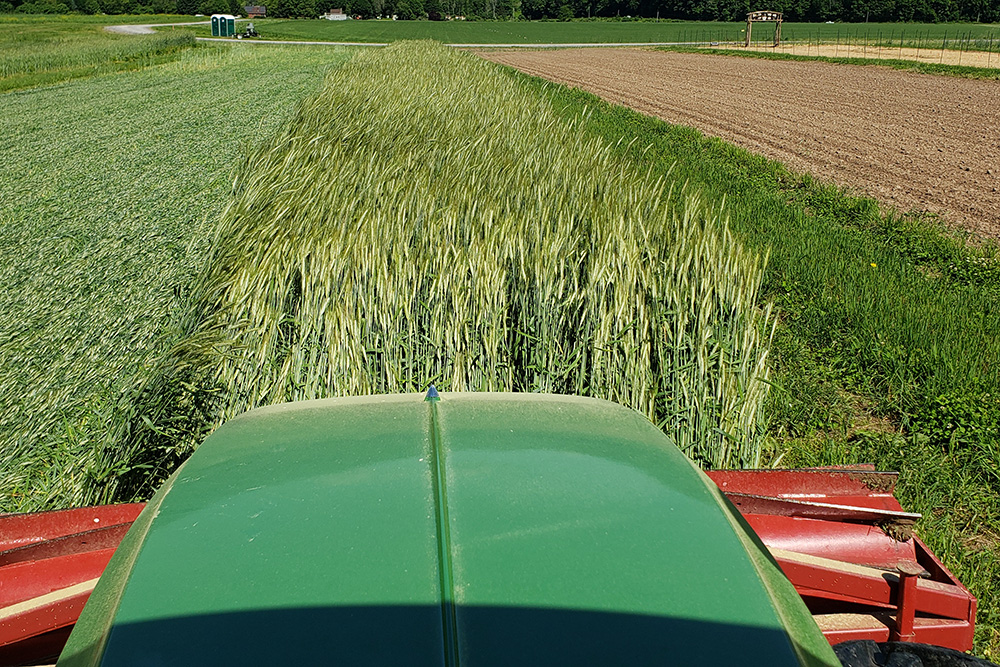Greenhouse Gas Trial
Evaluating Tillage and Cover Crop Impacts on
Greenhouse Gas Flux in Annual Vegetable Production Systems in Eastern New York
The potential to sequester carbon in well-managed agricultural soils has been extensively studied. However, very little of this body of research has been conducted on the potential to adopt practices to promote carbon sequestration in annual vegetable production systems.
In partnership with Cornell Cooperative Extension Eastern New York Commercial Horticulture (ENYCHP) and Cornell Cooperative Extension Orange County Natural Resources, we initiated a three-year trial designed to compare the greenhouse gas (GHG) flux from four different combinations of tillage and fertilizer application rate in winter squash fields located at the Farm Hub.
Overview:
The 2020 trial was designed to generate data to help answer the following research questions:
- What impact, if any, does reducing tillage have on total GHG flux and squash yield compared to using conventional tillage in an organic production system?
- What impact, if any, does reducing nitrogen fertilization rates have on total GHG flux and squash yield compared to using a standard sidedress application of 40 pounds per acre of nitrogen as Chilean nitrate in an organic production system?
- Is there any significant interaction between the tillage effect and the nitrogen fertilizer effect on total GHG flux and squash yield?
- Are there significant differences in measured soil temperature and soil moisture between the tillage and fertilizer rate treatment plots?
What we're measuring:
- Soil Temperature and Moisture Monitoring
- Gas Sampling
- Gas Chromatography
- Flux Calculations

Trial Design:
The researchers used a randomized complete block design with four copies and four treatments for this trial. Each treatment plot was 6 feet wide by 30 feet long and consisted of one row of transplanted ‘Waltham’ butternut squash. Each replicate consisted of four plots, one for each of the four treatments included in the trial.
The four treatments included in 2020 were:
- Reduced Tillage (RT) HIGH Nitrate: Roller crimp terminated winter rye with a “high” rate of soluble Chilean nitrate
- LOW Nitrate: Roller crimp terminated winter rye with a “low” rate of soluble Chilean nitrate
- Conventional Tillage HIGH Nitrate: Conventionally tilled (winter rye cover crop tilled in in early May, disced, harrowed, then maintained bare) with a “high” rate of soluble Chilean nitrate
- Conventional Tilled LOW Nitrate: Conventionally tilled (winter rye cover crop tilled in in early May, disced, harrowed, then maintained bare) with a “low” rate of soluble Chilean nitrate

Plot Tillage and Roller Crimping
Conventionally tilled plots were tilled in March of 2020 and again in June before the butternut squash was transplanted.
In Reduced Tillage plots, the winter rye continued to grow until pollen shed. The Farm Hub used a tractor-mounted roller crimper to terminate the rye cover crop on June 5, 2020 and again on June 10, 2020 to improve the kill rate of the grass.
‘Waltham’ butternut seedlings were hand transplanted into the plots on June 12, 2020 with two-feet of in-row spacing between transplants and six-feet between rows. A single line of drip irrigation was installed alongside each row of plants after transplanting and HVFH staff installed wire hoops and ProtekNet insect exclusion netting to prevent cucumber beetle damage to the crops.
